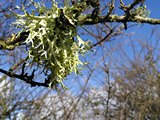Crustose Lichen Diversity
Introduction to Crustose Forms of lichen:
Both fertile and sterile forms are found:
- Fertile species produce various fruiting bodies from stalked and mushroom like, to pimples almost flush with the surface.
- Sterile species are able to propagate by vegetative means having isidia or soredia that contain both the fungal and algal partners and these can easily break away to become established in a new location. The soredia on the surface of some crustose species gives rise to their powdery texture.
Rhizocarpon geographicum
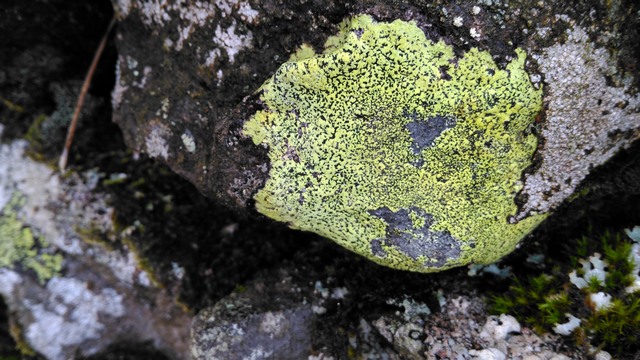
Thallus smooth and thin but having a distinct green/yellow colour.
UV light gives a bright orange fluorescence.
Rhizocarpon reductum
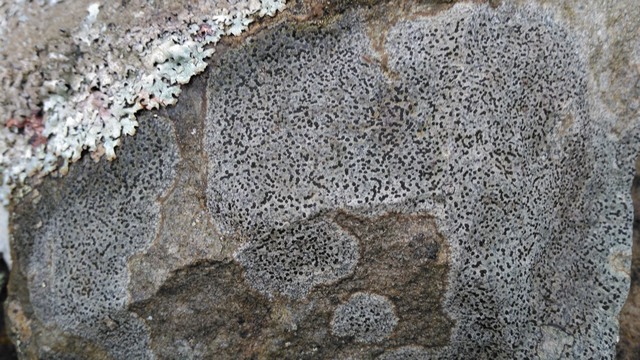
Thallus smooth, hard and thin. Apothecia 0.5mm dia, black with raised black margin.
Tests with K and C negative.
Some doubt over identification as Dobson 2011 p 393 states thallus usually 1-2cm and this specimen extends for 10cm. Many smaller examples were, however, found nearby.
Porpidia macrocarpa ?
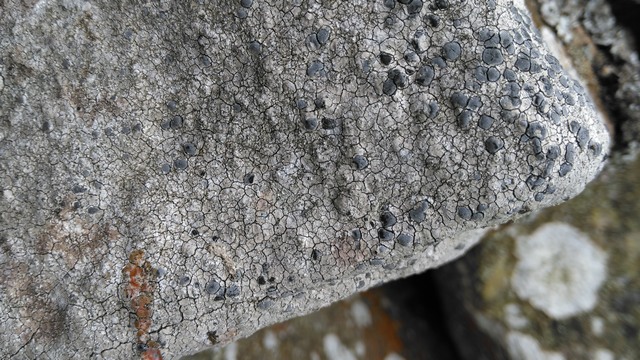
Large apothecia 1.5 to 3mm convex and without a margin but cracks around the outside and across the middle of many. Not in concentric circles. Some rust coloured patches.
Thallus soft and areolate (cracked into small paving stone sections). Surface partially with soridea. Prothallus cream.
Not Rhizocarpon petraeum: apothecia too large and no concentric pattern. Identification doubt because test with calcium hypochlorite positive red. (C+red.) Test with potassium hydroxide dark green (K+green).
Baeomyces rufus
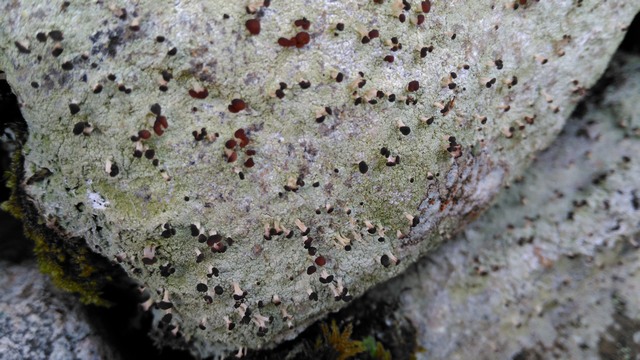
Minute mushroom shaped (podetia) with white stalk and brown apothecia. 1mm dia and 2mm high.
Thallus light green/ grey
Trentepohlia algae (not a lichen)
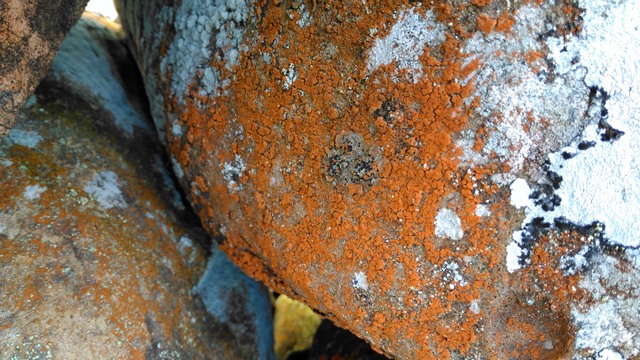
A filamentous chlorophyte green algae. The filaments have a strong orange colour caused by carotenoid pigments which mask the green of the chlorophyll.
Shown here as an independent, living algae but it can be a phycobiant in lichens, providing food for the fungal partner (or mycobiant). Unlike crustose lichens, it does not have a distinct outer boundary.
The fibrous structure can be readily observed at X20 when samples appear like bits of a tufted carpet.
Pertusaria corallina
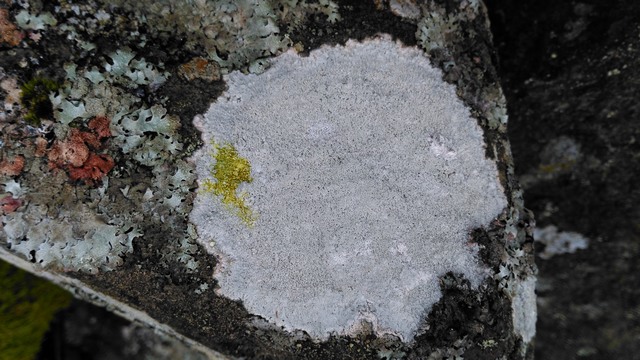
White/light grey crust with a rough and powdery surface caused by a covering of short, rounded isidia.
Test with potassium hydroxide solution yields a clear yellow indication. K+y
Pertusaria pseudocorallina
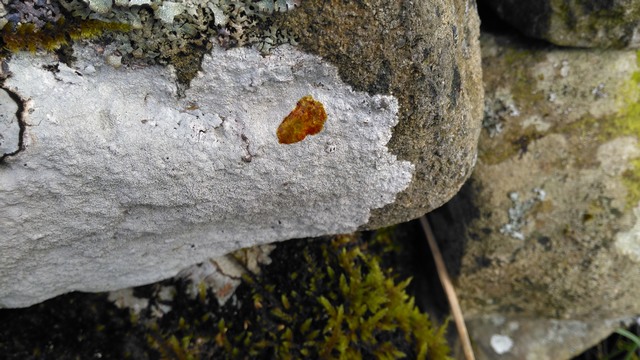
White/light grey crust with a rough and powdery surface caused by a covering of short, rounded isidia.
Test with potassium hydroxide solution yields a clear red indication. K+r
